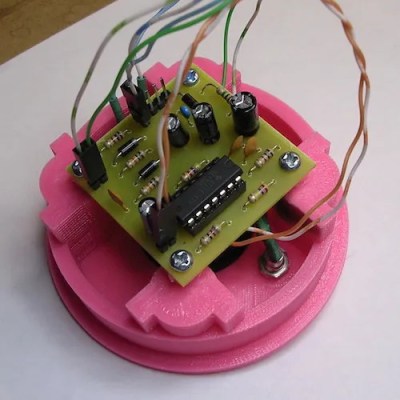In an excerpt from his book The Chinese Computer: A Global History of the Information Age, [Thomas Mullaney] explains how 1980s computer tech — at least the stuff that was developed in the West — was stubbornly rooted in the Latin alphabet. After all, ASCII was king, and with 60,000 symbols, Chinese was decidedly difficult to shoehorn into 8 bits. Unicode was years in the future so, of course, ingenious hackers did what they do best: hack!
The subject of the post is the dot matrix printer. Early printers had nine pins, which was sufficient to make Latin characters in one pass. To print Chinese, each character required at least two passes of the print head. This was slow, of course, but it was also subject to confusing variations due to ink inconsistency and registration problems. It also made the Chinese characters twice as big as English text.
Initial attempts were made to use finer pins to pack twice as many dots in the same space. But this made the pins too thin and subject to bending and breaking. Instead, some engineers would retain the two passes but move the print head just slightly lower so the second pass left dots in the gaps between the first pass dots. Obviously, the first pass would print even-numbered dots (0, 2, 4,…), and the second pass would catch the odd-numbered dots. This wasn’t faster, of course, but it did produce better-looking characters.
While international languages still sometimes pose challenges, we’ve come a long way, as you can tell from this story. Of course, Chinese isn’t the only non-Latin language computers have to worry about.



 their lifespan. While the concept of food-based robots may seem unusual, the potential applications in medicine and reducing waste during food delivery are significant driving factors behind this idea.
their lifespan. While the concept of food-based robots may seem unusual, the potential applications in medicine and reducing waste during food delivery are significant driving factors behind this idea. activated charcoal (AC) electrodes on a gelatin substrate. Water is split into its constituent oxygen and hydrogen by applying a voltage to the structure. These gasses adsorb into the AC surface and later recombine back into the water, providing a usable one-volt output for ten minutes with a similar charge time. This simple structure is reusable and, once expired, dissolves harmlessly in (simulated) gastric fluid in twenty minutes. Such a device could potentially power a GI-tract exploratory robot or other sensor devices.
activated charcoal (AC) electrodes on a gelatin substrate. Water is split into its constituent oxygen and hydrogen by applying a voltage to the structure. These gasses adsorb into the AC surface and later recombine back into the water, providing a usable one-volt output for ten minutes with a similar charge time. This simple structure is reusable and, once expired, dissolves harmlessly in (simulated) gastric fluid in twenty minutes. Such a device could potentially power a GI-tract exploratory robot or other sensor devices.
















